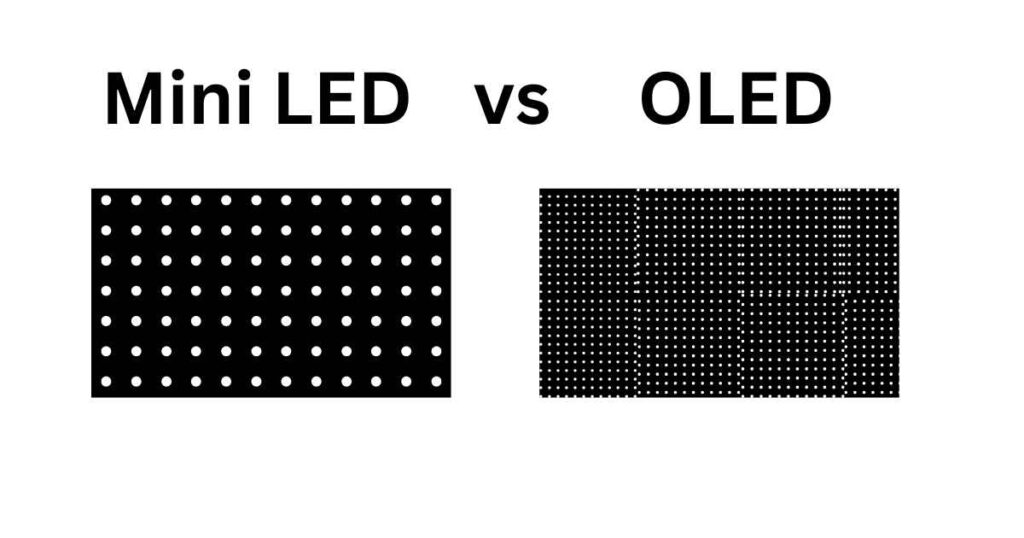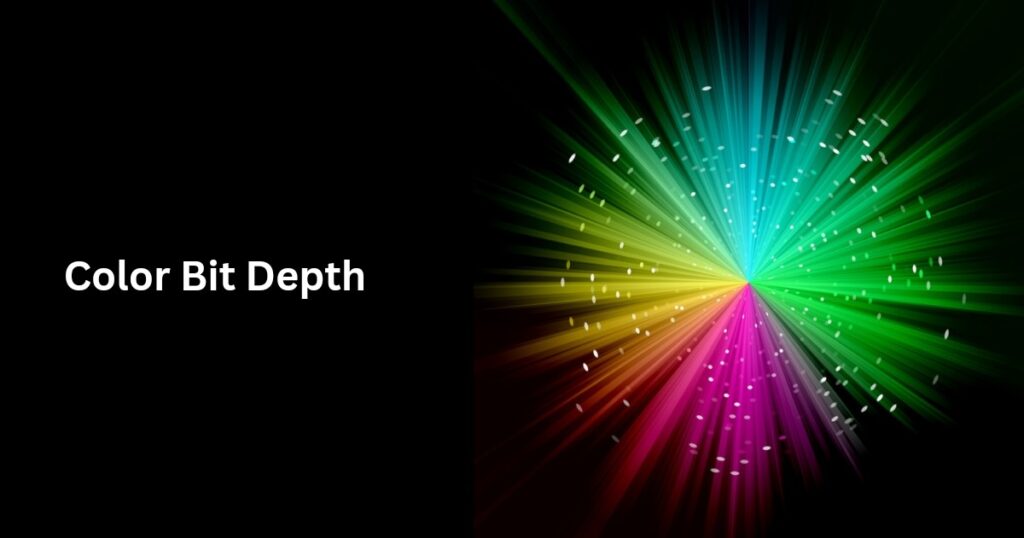Mini LED vs OLED: Which is a better TV?
The inky blacks of an OLED TV or the bright, punchy colors of a mini LED TV—what should you choose?
In this article on Mini LED vs OLED TV, we’ll break down the key differences between these two advanced display technologies. From contrast and brightness to viewing angles and price, we will talk on every factor that will help you make an informed choice.

Mini LED
Mini LED TV is a type of LCD TV that uses miniature LEDs for its backlighting system.
A mini LED is roughly 1/40th the size of a standard LED, allowing many more of them to fit behind the screen.
This smaller size of LEDs enables the TV to have a much higher number of local dimming zones, which significantly improves the contrast ratio compared to regular LED TVs.
These mini LEDs can glow together to produce a very high brightness level. Thus, they are very well-suited for bright rooms, effectively eliminating the impact of glare and reflections.
OLED
OLED stands for Organic Light-Emitting Diode.
An OLED TV uses self-emissive pixels, meaning each pixel generates its own light and can be turned on or off independently depending on the scene.
When a pixel is completely off, it emits absolutely no light, thus resulting in perfect blacks and infinite contrast ratio.
Because each pixel functions independently, OLED displays deliver exceptionally accurate colors and retain picture quality even at wide viewing angles.
Their ability to switch on and off instantly also enables ultra-fast response times, making OLED TVs an excellent choice for fast-paced action scenes and competitive gaming, where every millisecond counts.
Mini LED vs OLED: Key Differences
A Mini LED TV, as mentioned earlier, is still an LCD TV, but it uses a Mini LED backlight.
Compared to a regular LED TV, it offers better control over lighting because of the vast number of smaller LEDs.
This enhanced control allows for deeper colors and higher contrast, making the picture look more vibrant and realistic than on a standard LED TV.
But think about this: one TV has a few thousand dimming zones, while another has over a million. Which one do you think would deliver better contrast?
The latter refers to an OLED TV, although that’s not exactly how OLED technology works.
An OLED TV contains over 8 million self-emissive pixels, and each of these pixels can independently turn on or off based on the scene.
This allows it to achieve perfect blacks and infinite contrast, since pixels in dark areas are completely turned off, emitting no light at all.
In contrast, a Mini LED TV, even with thousands of dimming zones, cannot match this level of pixel-level precision.
While it can control backlighting more accurately than a regular LED TV, it still relies on a backlight shining through color filters—much like traditional LCDs.
In cheaper Mini LED TVs with fewer dimming zones, you may even notice some light bleeding from the bright objects into the dark areas, especially in high-contrast scenes.
This is also called blooming or the halo effect.
However, in high-end and premium mini LED TVs, the number of dimming zones is sufficient to deliver impressively deep blacks.
While these blacks may not be exactly on par with what OLEDs offer, they can get remarkably close.
Now, you might be thinking — how can a mini LED TV with just a few thousand dimming zones compete with an OLED TV that has millions of self-emissive pixels?
The answer may lie in our eye resolution. Our eyes can’t distinguish things beyond a certain limit.
When it comes to brightness, mini LED TVs generally outperform OLEDs.
That’s because OLED’s organic pixels have a brightness limit to prevent long-term degradation.
In contrast, the LEDs used in mini LED TVs are inorganic, meaning they don’t face the same risk and can be driven to much higher brightness levels — making them ideal for viewing in brightly lit environments.
As for response time, OLEDs are incredibly fast. Their pixels can switch on and off almost instantly — in around 0.1 milliseconds.
On the other hand, mini LED TVs can be slower in comparison, taking about 1 second, which may be due to the delay occuring between multiple layers present between the backlight and the display panel.
So, if you’re a serious gamer who plays fast-paced titles, an OLED TV will give you a more responsive and fluid experience.
Lastly, both a bright OLED TV and a premium mini LED TV with good local dimming can deliver a wide color gamut and impressive color volume.
Mini LED vs OLED: Which one to choose?
We’ve now compared OLED and mini LED TVs.
OLEDs generally offer a superior contrast ratio compared to most mini LED TVs.
Thanks to advancements like LG’s Micro Lens Array (MLA) and Samsung’s QD-OLED technology, modern OLEDs can also reach high brightness levels, making them suitable for bright rooms too.
The issue of burn-in, which was once a concern with OLEDs, is now quite rare due to built-in protections like pixel shifting and pixel refreshing.
That said, if you’re mainly watching content in a well-lit room and want to avoid any glare while still enjoying strong contrast, premium mini LED TVs are worth considering.
They deliver impressively deep blacks through advanced local dimming and offer bright, vivid colors that truly stand out in bright environments.
Mini LED vs OLED: The Verdict
Both OLED and mini LED technologies offer compelling performance, and in many ways, they are comparable.
OLED TVs, regardless of the brand or type, tend to deliver consistently high picture quality, with only some variations in brightness and color reproduction.
On the other hand, mini LED TVs can vary significantly in performance depending on the manufacturer and implementation.
For instance, Samsung’s Neo QLEDs and LG’s QNEDs both use mini LED backlighting, yet their picture quality can differ significantly, may be due to the differences in processing, panel type, and local dimming algorithms.
In summary, if top-tier picture quality or high-speed gaming is your priority, an OLED TV is your best bet. It offers true blacks, excellent contrast, and ultra-wide viewing angles.
However, if you mainly watch content in a bright room and are looking for vibrant colors, decent contrast, and a more budget-friendly option, a mini LED TV can be a great choice.


